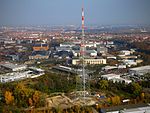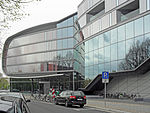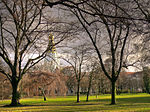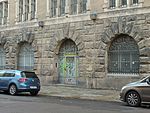Leipzig MDR railway station

Leipzig MDR is a railway station in the city of Leipzig, Germany. It was built as part of the Leipzig City Tunnel project and opened on 15 December 2013, enabling passengers to travel directly by rail from Leipzig Hauptbahnhof through the city centre to destinations south of the city. The station is in the cutting running from the southern ramp of the City Tunnel. Its planning name was Semmelweisstraße. It consists of two 140 metre-long side platforms that are located directly south of Semmelweisstraße, which crosses the railway tracks here; this street was recently built to connect Kurt-Eisner-Straße with Zwickauer Straße. Access to the platforms is by stairs and ramps. MDR stands for Mitteldeutscher Rundfunk, a public broadcaster located near the station.
Excerpt from the Wikipedia article Leipzig MDR railway station (License: CC BY-SA 3.0, Authors, Images).Leipzig MDR railway station
Semmelweisstraße, Leipzig Southeast center (Mitte)
Geographical coordinates (GPS) Address Nearby Places Show on map
Geographical coordinates (GPS)
| Latitude | Longitude |
|---|---|
| N 51.31994 ° | E 12.38644 ° |
Address
Leipzig MDR
Semmelweisstraße
04103 Leipzig, Southeast center (Mitte)
Saxony, Germany
Open on Google Maps











